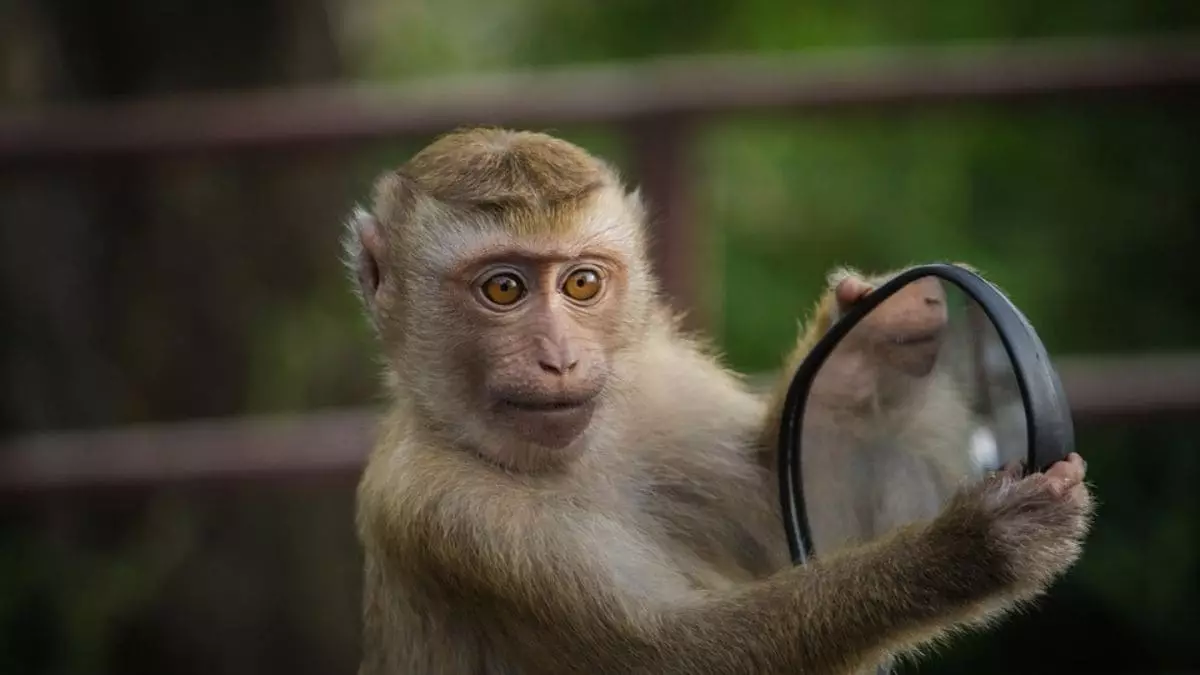The phenomenon of self-recognition in animals has fascinated scientists for decades. It offers insights into cognitive abilities that extend beyond mere instinctual behavior. Researchers often probe this aspect using various methods, including the well-known mirror test, which assesses an animal’s ability to recognize its reflection. Yet, the findings on different species reveal a complicated landscape of self-awareness, raising provocative questions. Recent studies performed in the wild have expanded our understanding of this concept, particularly in the case of baboons. Observations show that while these primates may engage with mirrors, they lack the ability to recognize themselves—a stark contrast to apes and dolphins, who have demonstrated self-awareness in controlled environments.
A significant research project conducted over five months at Tsaobis Nature Park in Namibia aimed to explore the self-recognition abilities of the chacma baboon (Papio ursinus). Large mirrors were strategically placed near popular watering holes frequented by two troops of these baboons. Researchers recorded the primates’ reactions to their reflections while simultaneously using laser dots projected onto their faces. The goal was to ascertain if the baboons could connect the images they saw in the mirror with their own bodies. Observations indicated that while 64 percent of the examined baboons interacted with laser marks on their arms and legs, merely one out of fifty-one responded to the marks appearing on their faces. This disparity highlights a significant cognitive divide that exists within species when it comes to self-awareness.
The results of this study are compelling and necessitate a re-evaluation of how we understand self-awareness in non-ape primates. Although some baboons demonstrated interest in the mirrors, their lack of reactions to facial markings suggests a limited understanding of self-image. According to Alecia Carter, an evolutionary anthropologist from University College London, discerning levels of self-awareness in animals presents unique challenges. Cognitive self-recognition may not be an automatic trait for all animal species; instead, it may depend heavily on environmental stimuli and prior experiences.
Psychologist Lindsay Murray echoes this sentiment by pointing out that self-awareness in humans evolves gradually, as evidenced by the fact that many children do not pass the mirror test until after two years of age. Self-awareness may, therefore, exist on a continuum rather than being an absolute trait, which raises intriguing implications for how we study various animals. It suggests that observations of baboons may be pointing toward an alternative mode of awareness—one that does not rely solely on visual self-recognition.
These findings could have profound implications for the broader field of primatology. Comparative studies that juxtapose the cognitive skills of baboons with those of other primates show a clear spectrum of self-recognition abilities. Many researchers, including primatologist James Anderson, have reinforced the idea that most non-ape primates—including baboons—do not possess the same cognitive faculties for self-recognition seen in their ape relatives.
Moreover, the absence of self-recognition doesn’t necessarily imply cognitive inferiority. Baboons excel in their natural habitats, showcasing intelligence through complex social structures, cooperative behaviors, and problem-solving abilities. Thus, these adaptations may serve their survival needs far more effectively than the comprehension of self in the reflection of a mirror.
The investigation into baboons’ self-recognition invites us to rethink our definitions of consciousness and self-awareness. The apparent lack of response to mirrors among these primates does not signify a cognitive shortcoming but rather highlights the diversity of intelligent behaviors adapted to specific environments. As we continue to study and learn from various species, we must remain open to the possibility that self-awareness manifests itself in multifaceted forms, each suited to the survival demands and environmental contexts of the species in question. This ongoing dialogue in animal behavior science fosters a richer understanding of the complex tapestry of cognition, helping to shape future research efforts focused on the enigma of animal psychology.


Leave a Reply